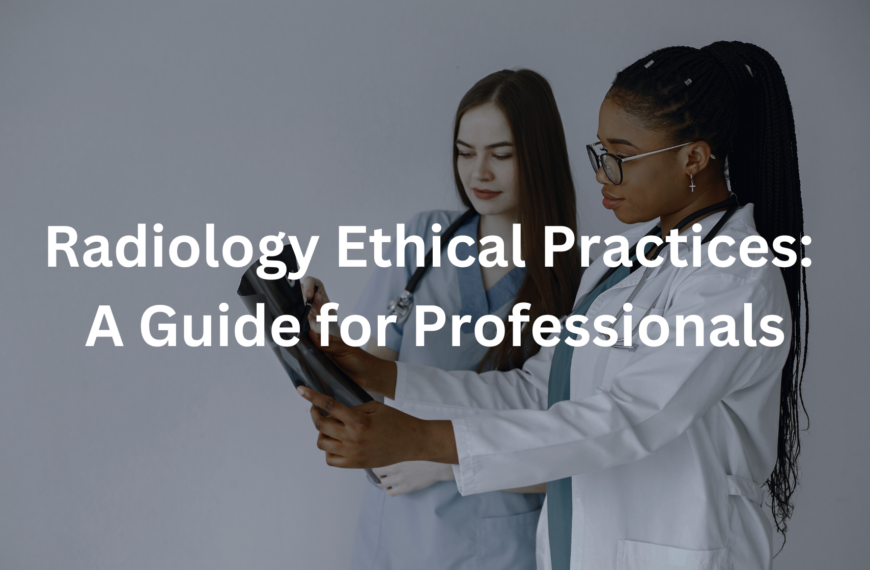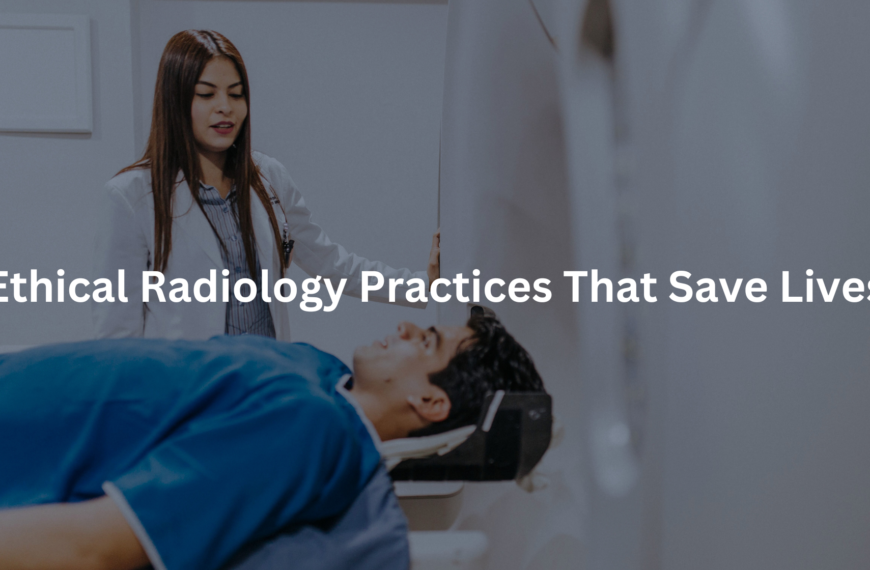Explore the safe & ethical use of radiation in Australian health & research. Understand regulations, benefits & responsible practices.
Ethical radiation use matters in Australia. It’s about keeping everyone safe – patients, doctors. The Australian Radiation Protection and Nuclear Safety Agency, or ARPANSA, sets the rules.
These rules are about when it’s acceptable to use ionising radiation and how to do it responsibly. Things like X-rays use radiation, and so do some cancer treatments; even some scientific equipment uses radioactive sources of radiation for measurement in manufacturing.
Those rules help ensure the radiation dose is as low as reasonably achievable (ALARA principle). There are hefty penalties if people don’t follow these guidelines. Want to learn more about this important subject? Keep reading to find out how.
Key Takeaway
- Radiation must be justified by showing benefits outweigh risks.
- Keeping radiation doses as low as possible is crucial.
- Special guidelines exist for research involving human exposure to radiation.
Understanding Radiation Safety Standards
Sitting there, flipping through my medical journals, it hits you: radiation is serious stuff. These radiation safety standards, well, they aren’t just suggestions, they’re there to keep things safe when we’re ionising stuff. ARPANSA (Australian Radiation Protection and Nuclear Safety Agency) makes these rules to shield people from any radiation that might cause a tumour.
So, what exactly are the rules, what are the guidelines?
- Justification: Is it really needed? [1]
- ALARA Principle: Keep doses as low as possible.
Justification is about asking if using radiation is really worth it, is it really crucial? Like, if it helps find a tumour, sure thing. But if it’s kinda pointless, it’s probably best to just give it a miss. The ALARA (As Low As Reasonably Achievable) principle means we should always aim to use the least radiation needed. And if we can use less and still get the job done? Well then that’s what you should do!
ARPANSA Guidelines and Regulations
Credits: ARPANSA
Flipping through ARPANSA’s guidelines makes it clear: these aren’t just suggestions, they’re rules! There’s the Protection from Harmful Radiation Act 1990 backing it all up. And that act, well, it’s pretty serious about keeping people and the environment safe from getting tumours caused by harmful radiation. The radiation exposure that people might get needs a proper look.
The gist?
- Guidelines are rules, backed by law: The Protection from Harmful Radiation Act 1990.
- Exposure Limits: Limits in hospitals, research facilities.
Think about those workers at hospitals, constantly around X ray machines. Or what about the researchers, mucking about with who knows what! There are limits on how much radiation they can get, to keep everyone safe. It keeps everyone safe while still letting doctors help patients, researchers do, well, research, and no one getting fried in the process. Safety first, then science.
Ionising and Non-Ionising Radiation Protection
Reading up on this, you start to see how varied it all is, radiation that is. You have ionising radiation and non ionising radiation. X rays, gamma rays that’s ionising stuff, that can cause a bit of trouble if things aren’t done right. And then you got radio waves and microwaves, the non ionising radiation which, for the most part, are safer, probably.
Here’s the deal:
- Ionising Radiation: X rays, gamma rays, needs strict protections.
- Non Ionising Radiation: Radio waves, microwaves, generally safer, it seems.
If you’re a doctor or a healthcare worker muckin’ around with X rays, you gotta gear up, wear the special gear. Radiation shielding, they call it. And devices that keep an eye on how much radiation you’re getting too, radiation monitoring devices. It’s like having a personal radiation radar; if you get a tumour, you get a tumour. Keeping you safe while you help others. Fair enough.
Medical Radiation Ethics
Hospitals. Doctors using radiation to peek inside us, that’s medical imaging for you. Now, with great power, and radiation power is pretty great, comes great responsibility. They must adhere to medical ethics to give the best care possible.
What does it mean for patients?
- Medical Imaging: Doctors use radiation to see inside your body.
- Informed Consent: Patients should know the risks and benefits.
Before you go get an X ray or any fancy procedure, you should know what’s coming your way. Informed consent, it’s called. What’s gonna happen, why you need it, what you are risking. It’s a good thing to know these things, really. Keeps you in the loop, and hopefully, a little less scared too. Gotta be a bit scary to think you’re getting fried from radiation.
Research and Radiation Safety
So, you’re a researcher, and you want to poke around with radiation and people? Gotta play by the rules! First things first, get the go ahead from a Human Research Ethics Committee, HREC for short. They’re the ethical watchdogs, making sure things don’t get too wild.
What are the ethical guidelines?
- HREC Approval: A committee to oversee research. [2]
- Informed Consent: Explain study risks to volunteers.
- Second Opinion: High doses need another expert’s okay.
And then, you gotta get informed consent from the volunteers. Lay it all out, the good, the bad, and the radiation, everything. If the radiation doses start looking a bit dicey, get a second opinion, get another expert to give it the okay. Gotta keep things safe, and ethical. Wouldn’t want anyone getting a surprise tumour, would we?
Radiation Worker Training and Safety Culture
Seems like if you’re gonna muck around with radiation you need training, special training, mate. Healthcare workers especially. It all starts with the training, learning the ins and outs of radiation safety and using the gear right. Lead aprons, for instance, are great for blocking the bad stuff, personal protective equipment, they call it.
What is needed for radiation training and safety?
- Special Training: Healthcare workers learn radiation safety.
- Protective Gear: Lead aprons and more.
- Safety Culture: Everyone follows safety rules.
- Regular Audits: Keeping everyone in check.
But its not all about the gear. Hospitals and research places need a strong radiation safety culture. Everyone needs to be on board with safety, following the rules. And regular audits, to keep everyone in check, making sure they’re doing their part to stay safe. Safety first, always. It probably could be a good thing to always have safety first.
Emergency Response Protocols and Management

Just been thinking; what if something goes wrong with all this radiation stuff? Well, seems like you need a plan, an emergency response protocol. Helps everyone know what to do if things go south. Got to have the gear to deal with accidents and keep the public safe. That’s important, keeping the public safe.
What should a response protocol have?
- Emergency Plan: What to do if things go wrong.
- Proper Equipment: Gear to handle radiation accidents.
- Safety First: Keeping the public safe.
- Follow The National Directory for Radiation Protection: They will manage the situation carefully
Professionals will follow the rules from the National Directory for Radiation Protection in case there’s an emergency. They’ll handle things carefully, making sure everyone’s safe and the environment’s not getting wrecked. Its better to have a plan and not need it, than to need a plan and not have it.
Practical Advice for Safe Radiation Use
To keep everyone safe when using radiation, here are some practical tips:
- Always justify the use of radiation. Make sure it’s really needed, especially in cases like child imaging, where extra caution is paramount.
- Keep doses as low as possible by using the ALARA principle.
- Ensure everyone involved understands the risks and has given informed consent.
- Regularly train staff on radiation safety.
- Have emergency plans in place for any incidents.
By following these tips, we can use radiation safely and ethically to help people while protecting ourselves and the environment.
FAQ
What are the key principles for protecting people from radiation exposure?
The ALARA principle guides radiation safety by ensuring exposure is As Low As Reasonably Achievable. Radiation safety standards and guidelines from ARPANSA help protect both workers and the public. This approach involves careful risk assessment, using radiation protection legislation, and implementing comprehensive safety protocols. Radiation safety officers play a crucial role in monitoring exposure, ensuring compliance, and maintaining a strong safety culture that prioritises human health and minimises potential risks.
How do medical professionals manage radiation risks during diagnostic and treatment procedures?
Medical radiation ethics demand careful consideration of patient safety. Diagnostic reference levels and radiotherapy ethics guide healthcare providers in justification of radiation exposure. Nuclear medicine safety involves obtaining informed consent, protecting pregnant patients and children, and using optimization of protection strategies. Human Research Ethics Committees review protocols to ensure participants’ wellbeing, while medical imaging professionals follow strict guidelines to minimise unnecessary radiation exposure.
What protection measures exist for radiation workers in various industries?
Occupational exposure requires comprehensive safety approaches. Radiation worker training, personal protective equipment, and occupational dose records are critical components. Industries like mining and scientific research implement radiation safety regulations, compliance audits, and quality assurance programs. Radiation licensing ensures workers understand risk communication, safety protocols, and the importance of using appropriate radiation shielding and monitoring techniques.
How does Australia manage radiation safety in emergency situations?
Emergency response protocols are vital for radiation incident management. The National Directory for Radiation Protection provides guidelines for comprehensive emergency preparedness. This includes environmental radiation protection strategies, radiation safety committees, and established procedures for tracking and responding to potential radiation events. Public awareness campaigns and risk communication help communities understand and prepare for potential radiation-related emergencies.
What technologies and methods are used to monitor and detect radiation?
Radiation detection equipment and dosimetry technologies play a crucial role in safety. Environmental radiation monitoring helps track potential risks, while radiation exposure tracking ensures ongoing safety. Radiation safety technology includes advanced monitoring systems, sophisticated detection equipment, and comprehensive documentation methods. These tools support the implementation of radiation protection research and help maintain rigorous safety standards.
How are radiation risks assessed and communicated to the public?
Radiation risk assessment involves understanding radiation epidemiology and low-dose radiation effects. Public exposure limits and risk perception are carefully evaluated through scientific research. Stakeholder engagement in radiation safety ensures transparent communication about potential radiation-induced health impacts. Educational programs focus on radiation safety education, helping people understand the nuanced risks and protection measures.
What ethical considerations guide radiation use in research and industry?
Ethical decision-making in radiation use requires careful balance between potential benefits and risks. Research participant consent, comprehensive risk assessment, and adherence to radiation protection legislation are fundamental. UV radiation safety, electromagnetic field safety, and radon protection measures demonstrate the broad scope of radiation safety considerations across different contexts and environments.
Conclusion
At the end of the day, ethical radiation use comes down to safety, and a proper concern for others. Australia’s got rules and regulations to shield patients, workers, and the environment, so there’s no worries about some random radiation leak. By understanding why its important, like justification, optimisation, and the safety culture, we can make sure radiation is used responsibly for the health and for research. So, keep learning, keep safe, and dont get any tumours!
References
- https://www.epa.nsw.gov.au/your-environment/radiation/managing-radiation-nsw
- https://www.health.vic.gov.au/radiation/research-involving-irradiation-of-people




